Review By Tom Lyle (page 1 of 4)

The Danish high-end audio manufacturer Aavik was nice enough to send me three components from their entry level-line. I call this gear “entry-level” not because it is a system priced for those new to the exciting world of high-end audio but because they are the least expensive components in Aavik Acoustics’ 180 / 280 / 580 lineup. The Aavik Acoustics I-180 Integrated Amplifier is the base model — which makes its world class audio performance even more impressive.
I did not know the price of these three components when they arrived at my home for review. On looks alone, I assumed that they would cost much more. About halfway through the review period, I peeked inside the cabinet of this integrated amplifier. Its innards looked as if they were constructed by an engineer but also by a visual artist. Its complex yet very neatly arranged interior was impressive.
During my audition of all three components, I determined that their display and intelligent functionality belied their relatively low price. One minor nit I have to pick is Aavik’s decision to use a generic Apple remote for these three components rather than design one of their own. Although the Apple remote is functional, by its nature, it does not add to the intangibles that often improve the user experience, and in this case, not regret spending nearly $30,000 for the three components.
I was told by Igor Kivritsky, who is in charge of Aavik’s N. American distribution told me that rather than design a remote, Aavik “focused all their resources on developing these first”, but that an Aavik universal remote is will be available later this year. I would hope that the currently provided remote wouldn’t influence one’s purchasing decision, but If I were to acquire any or all of these Aavik components, I’d insist on receiving the new Aavik remote when it becomes available.
I-180 Integrated Amplifier
It seems as if we have gotten to the point where Class D amplifiers are almost universally accepted. Although there will always be holdouts, those are usually audiophiles who were disappointed when they heard an early Class D model. Some of these were obviously marketed before they were ready for primetime. But that was quite a long time ago.
The I-180 sounds nothing like those early Class D amplifiers yet retains all the advantages of using this switching circuit, very high efficiency. In addition, it generates little heat and thus little or no heatsinks, a much smaller size.
Aavik used the UMAC amplifier technology developed to surpass the sound quality of other recent Class D amplifiers. This newer circuit focuses on two areas of modular amplifier design; the first is PWM (pulse width modulation) generation is made with sine wave modulation instead of triangle modulation, which has been used for quite some time. This PWM lowers high-frequency noise by eliminating “sharp corners” and needs much less filtering at the output. It also leads to an improved damping factor and thus better speaker control.

In addition to using sine-wave modulation rather than triangular modulation, the Aavik uses “advanced dual mixed-mode feedback” that has been previously used only in the best linear amplifiers. Not only does the I-180 use these two advances in module amp design, but Aavik also uses a volume control that uses what they call an “inverted, virtual GND amplifier technology, which they claim provides the best stability. Providing the lowest signal-to-noise ratio with powerful feedback damps the signal to a very low gain enables it to preserve the full signal regardless of the volume setting.
All three components reviewed here have a giant red LED display that spans from the bottom to the top of the cabinet, allowing one to read this display from across the room with ease. Another nice feature of these components is that I heard no difference whether I stacked the three cabinets atop each other or placed them on different shelves. Their gloss black front panel with a single knob on the right and a few push buttons on the left gave the cabinets a spare, modern-looking appearance.
This relatively small integrated amplifier packs lots of horsepower under its hood. At 300 Watts per channel, it had no problem whatsoever driving my rather large Sound Lab Majestic 545 full-range electrostatic speakers. I usually drive them with a Pass Laboratories X250.8 solid-state power amplifier, and its signal is fed by a tube-powered linestage, the Nagra Classic Tube Preamp.
I feel as if I could write a dissertation explaining the differences in sound quality that I heard between these two methods of powering my system. However, I became accustomed to the sound of the Aavik I-180 in place of my amp/preamp reference rather quickly. The I-180 had a muscle-amp demeanor, and this was very impressive, as its low-frequency prowess was easy to spot. Its pitch-specific, bottomless bass response, combined with extremely quick transients, made listening to this amplifier a blast.
I thought this was a perfect time to listen to my Japanese pressing of the Pink Floyd LP Obscured By Clouds that I still had it lying about from when I was recently geeking out, comparing it to the remixed version on the recently released double CD ObfuscAtion (sic), part of the Early Years box set.
I spun the record on a Basis Audio V turntable with a Top Wing Suzaku “Red Sparrow” cartridge mounted on a Tri-Planar 6 tonearm. The turntable’s AC was connected to an outboard power supply and speed controller. This analog front-end ran through a Pass Labs XP-17 phono preamplifier.
This album mixes what most would consider a bridge between early and later period ‘Floyd. Also, most would consider it an excellent recording, which is surprising, primarily due to it not being recording at Abbey Road, their usual studio of choice, but instead Strawberry Studios, outside of Paris.
I wasn’t prepared for the amount of low-end heft that this integrated amplifier possessed. I should have, as this was a 300-Watt Class D amplifier, after all. Roger Water’s bass guitar and Nick Mason’s drums were reproduced with a sound with a pitch-specific, extended-sounding bass that wasn’t one of the qualities that I usually ascribe to this recording. Roger Water’s bass guitar, combined with the thud of Nick Mason’s kick drum, added to the pace and rhythm of the album, making me bob my head along with the music, which wasn’t something I usually did with many Pink Floyd albums.
I was shocked this album sounded so good, as I recently listened to the remixed version on CD, yet the I-180 seemed to narrow the gap between this and what I assumed was the crisper sound on the newly remixed version. This narrowing was not because it lessened the difference between the two versions but esthetically brought them closer together. Because of this, I can’t imagine why the band seemed to think this album needed remixing. In addition, the space that the I-180 seemed to create between the instruments made it easier to hear the difference between settings on Roger Water’s bass guitar and different recording techniques used on the drums on each track.
On this album, there are many tracks where Pink Floyd plays like an actual rock band, even coming close to hard rock in some ways, such as the second song on the first side, “When You’re In…”. Mason hits the snare drum harder on this track than I ever heard before, and “The Gold It’s In The…”, which appears two cuts later, has actually been covered by some heavy metal bands. The I-180 rendered a very weighty and captivating sound on these tracks. The I-180’s deep bass response was one of the best sonic attributes of this integrated amplifier.
During the entire review period, I never sensed that the Aavik I-180 added its own “sound” to the signal, and this clarity made each recording I played able to reveal both the faults and conquests of each. Both macro- and micro-dynamics were reproduced with a very lifelike quality through the Aavik I-180.
My reference amp and preamplifier, which cost more than three times as much as this single Aavik component, were better at differentiating between very similar sounding instruments that contained lots of high-frequency energy. However, after some time spent with the Aavik in my system, this minor complaint became less noticeable, and I became much more appreciative of the very positive traits of this integrated amplifier. The Aavik I-180 had a very detailed sound, yet never sounded etched or in any way overly detailed, depending on the recording, of course.
I often said to myself that I was impressed by this integrated amplifier, that for a Class D amplifier, it sounded excellent. However, as I got further into the review period, I stopped thinking that it was an outstanding Class D integrated amplifier, but simply an outstanding integrated amplifier, especially at its price. I thought this true even after reinstalling it into my system after listening to my reference. Of course, I have heard better, but these amps had much less power and far fewer features than this very good-looking integrated amplifier.
The I-180’s front-panel covering red LED display was easy to read even from across the room, and the intangibles of this amplifier, as many settings can be changed by the user. I would have liked a subwoofer output, but other than that, there wasn’t much more than I would have liked.
At $7200, I have a bit of trouble calling this integrated amplifier a bargain, but at 300 Wpc, it is a muscle-amp that I doubt one will find one with this much power combined with this good looks anywhere near its price.
Next page: Aavik Acoustics D-180 DAC Review
I-180 Specifications
Line Stage
Gain (line 1 – 4: 5-15dB; maximum input 4.5V RMS
Gain (line 5: 1-11dB; maximum input 6.5V RMS
Input impedance 10kOhm
Preamplifier Output:
One pair of RCA output
Maximum Output: 7.5Vrm
Distortion, Line Atage:
<0,005% (THD at 1kHz, 1V input)
Output impedance: 50 Ohms
Volume control: 76 positions in 1dB steps
Output:
Two channels at 300 Watts @ 8 Ohm (600W @ 4 Ohms)
Distortion (THD+N): <0,006%
IMD: <0.002%
TIM: <0.008%
Dimensions: 4″ x 15″ x 15″ (HxWxD)
Weight: 19.5 lbs.
Price: $7200















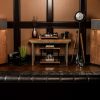

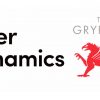
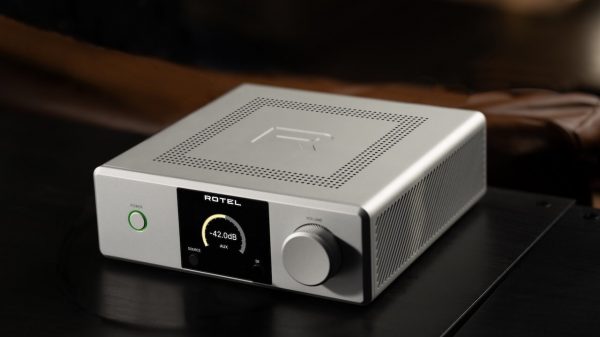
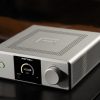
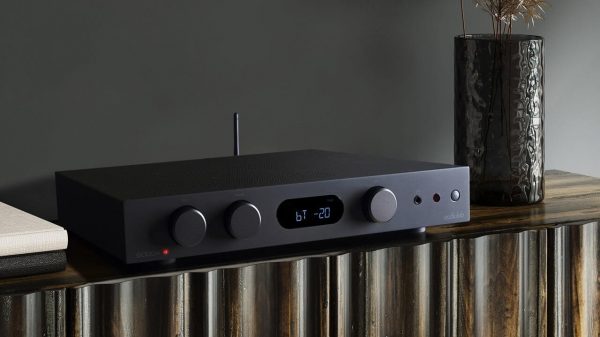
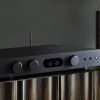

















Michael Fisher
July 26, 2021 at 5:11 am
The 1% can buy what it wants…